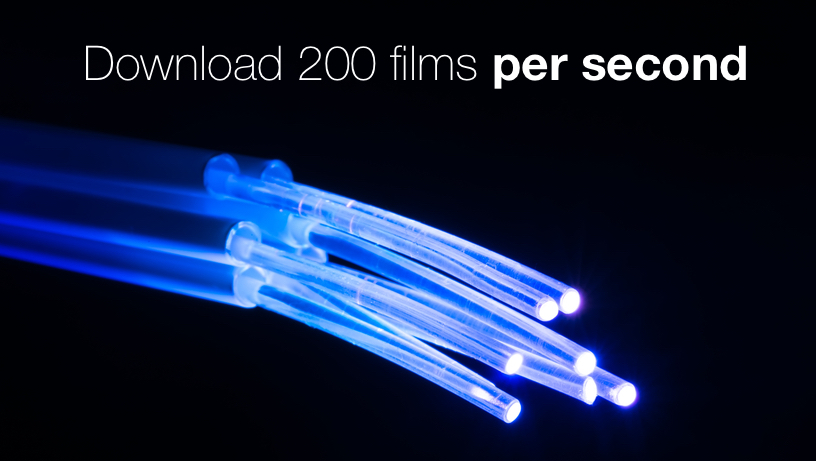
 Fibre cable graphic by www.shutterstock.com
Fibre cable graphic by www.shutterstock.com
BT's recent experiment takes broadband connectivity over fibre to an extreme. Yet, it may be some time before such speeds reach the end consumer, if ever.
You may think you have fast broadband. Some people near me have in excess of 150 Mbit/s. It's a little frustrating for me because I get exactly one hundredth that speed in my village, which is only seven miles from a major city in the UK. Still others, especially in places like South Korea and Japan, can get over a gigabit. It's a very unequal world.
Incredible bandwidth
But all of that is likely to be of trivial significance in the light of a recent announcement by BT. The company managed to send an almost unimaginable 5.6 Tbit/s down a fibre link between its UK East Coast research facility in Ipswich and the BT Tower in London. That's not far short of a terabyte per second and, if you've ever had to copy a multi-terabyte disk, you'll appreciate just how fast that is.
It's worth saying that this was done under completely experimental conditions and isn't likely to be available to consumers for a long time. Of course, consumers don't need that raw speed. The point is that it shows that the technology has room to grow from where it is at the moment and that all the dire warnings about the Internet breaking down under the strain are premature.
Real world considerations
For most people, though, what matters is not what happens in the labs (and in the fibre connecting them), but what they can get at home. Right now, in the US and the UK, there is a multi-class system. As long as you're not doing anything more demanding than sending emails, you're going to be OK; but fast broadband is quickly becoming an essential part of people's lives. Without it, it can decimate your ability to take part in the digital age. On a practical level, we're already seeing house prices falling where broadband is sub-standard.
There are even calls for proper access to be considered as a human right.
The BT experiment was, I suspect, intended to demonstrate the raw speed of BT's core network. That's the part of the system that we neither normally see, nor have direct access to. You can think of it as the backbone of the network.
But it does show that, in principle, there is almost no limit to internet speeds.
In reality, though, all the normal business restraints apply, which means that unless it makes a profit, we're not going to get these speeds any time soon.
Thanks to IBTimes for the tip-off.
Graphic by Shutterstock
Tags: Technology



Comments